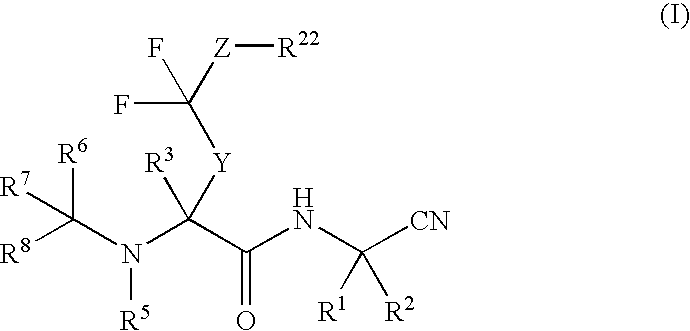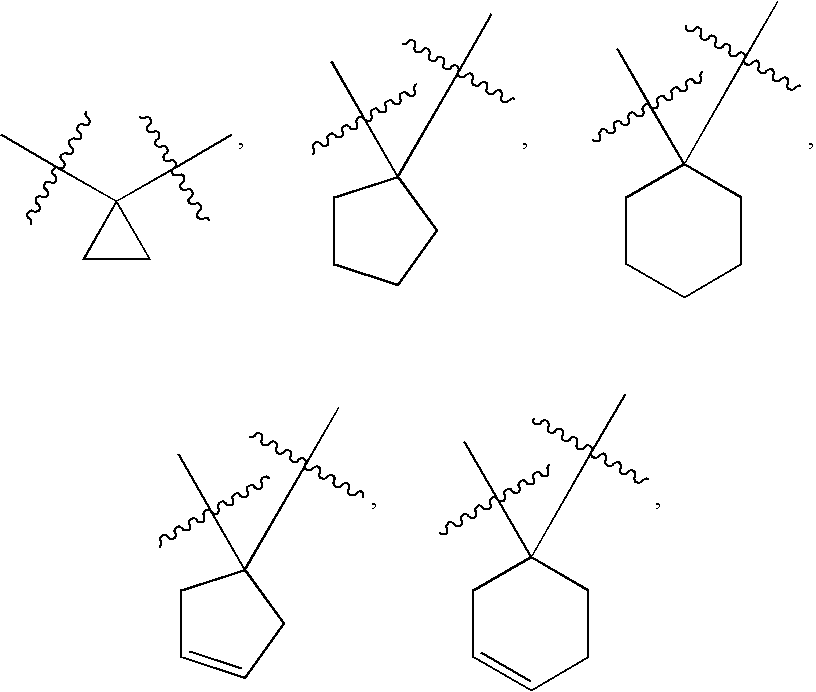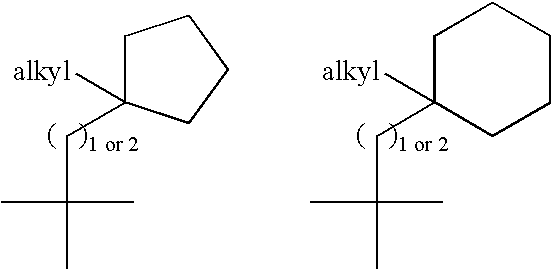Di-fluoro containing compounds as cysteine protease inhibitors
a technology of cysteine protease inhibitor and difluoro containing compound, which is applied in the direction of biocide, cardiovascular disorder, drug composition, etc., can solve the problems of pathological consequences, expensive treatment regimen, and erratic activity of cysteine proteases
- Summary
- Abstract
- Description
- Claims
- Application Information
AI Technical Summary
Benefits of technology
Problems solved by technology
Method used
Image
Examples
synthesis example 1
Synthesis of 1-aminocyclopropanecarbonitrile hydrochloride
[0198]
[0199]A mixture of benzophenone imine (25 g, 0.138 mol, Aldrich) and aminoacetonitrile hydrochloride (25 g, 0.270 mol, Lancaster) in dichloromethane (1000 mL) was stirred in a 2 L Erlenmeyer flask under nitrogen at room temperature for five days. The reaction mixture was filtered to remove the precipitated ammonium chloride and the filtrate was evaporated to dryness in vacuo. The resulting residue was dissolved in ether (400 mL) and washed with water (200 mL) and brine. After drying over magnesium sulfate, the solution was evaporated to give (benzhydrylideneamino)-acetonitrile (47.89 g).
[0200]A solution of sodium hydroxide (91 g, 2.275 mol) in water (91 mL) in a 2 L flask was cooled on ice under nitrogen and then treated with benzyl triethyl ammonium chloride (2.0 g, 0.0088 mol, Aldrich) and (benzhydrylideneamino)acetonitrile (47.89 g) in toluene (100 mL). 1,2-Dibromoethane (23 mL, 122.4 mmol, Aldrich) was then added dr...
synthesis example 2
Synthesis of methyl 2(S)-2-benzyloxycarbonylamino-3-chlorocarbonylpropionate
[0202]
[0203]See, Synth. Comm. 1993, 23(18): 2511-2526. 2-Methyl N-carbobenzoxy-L-aspartate (5 g, 17.7 mmol) was dissolved in 30 mL of dry THF and stirred under N2 at 0° C. Thionyl chloride (10.5 g, 88.5 mmol, 5 eq.) was added to the solution by syringe at 0° C., and the solution was refluxed for one hr. The solvent was removed in vacuo and the product was crystallized by methylene chloride / hexane to give 2(S)-2-benzyloxycarbonylamino-3-chlorocarbonylpropionic acid methyl ester. 1H NMR (400 MHz, CDCl3) δ 3.48 (dd, 1H, J=18.5 Hz, J=3.7 Hz), 3.56 (dd, 1H, J=18.5 Hz, J=3.7 Hz), 3.74 (s, 3H), 4.58 (m, 1H), 5.10 (s, 2H), 5.72 (d, 1H), 7.30-7.35 (m, 5H) ppm.
synthesis example 3
Synthesis of methyl 2(S)-2-amino-4,4-difluoro-5-phenylpentanoate hydrobromide
[0204]
[0205]To a suspension of copper(I) bromide-dimethyl sulfide complex (2.6 g, 12.72 mmol, 1.2 eq.) in dry THF was added a solution of lithium bromide (2.2 g, 25.44 mmol, 2.4 eq.) in dry THF. The mixture was stirred at room temperature (RT) for 20 min, and then was cooled to −78° C. A solution of benzyl magnesium chloride (13 mL, 12.72 mmol, 1.2 eq.) followed by a solution of 2(S)-2-benzyloxycarbonylamino-3-chlorocarbonylpropionic acid methyl ester (3.16 g, 10.6 mmol, 1 eq.) in dry THF were added. The mixture was stirred at −78° C. for 30 min and then was quenched with sat. ammonium chloride. The mixture was extracted with ethyl acetate. The organic layers were dried over magnesium sulfate and then concentrated in vacuo. The residue was purified by flash column (1:1 ethyl acetate:hexane) to give 2 g of 2(S)-2-benzyloxycarbonylamino-4-oxo-5-phenylpentanoic acid methyl ester.
[0206]A mixture of 2(S)-2-benzy...
PUM
| Property | Measurement | Unit |
|---|---|---|
| temperature | aaaaa | aaaaa |
| temperature | aaaaa | aaaaa |
| temperature | aaaaa | aaaaa |
Abstract
Description
Claims
Application Information
 Login to View More
Login to View More - R&D
- Intellectual Property
- Life Sciences
- Materials
- Tech Scout
- Unparalleled Data Quality
- Higher Quality Content
- 60% Fewer Hallucinations
Browse by: Latest US Patents, China's latest patents, Technical Efficacy Thesaurus, Application Domain, Technology Topic, Popular Technical Reports.
© 2025 PatSnap. All rights reserved.Legal|Privacy policy|Modern Slavery Act Transparency Statement|Sitemap|About US| Contact US: help@patsnap.com



